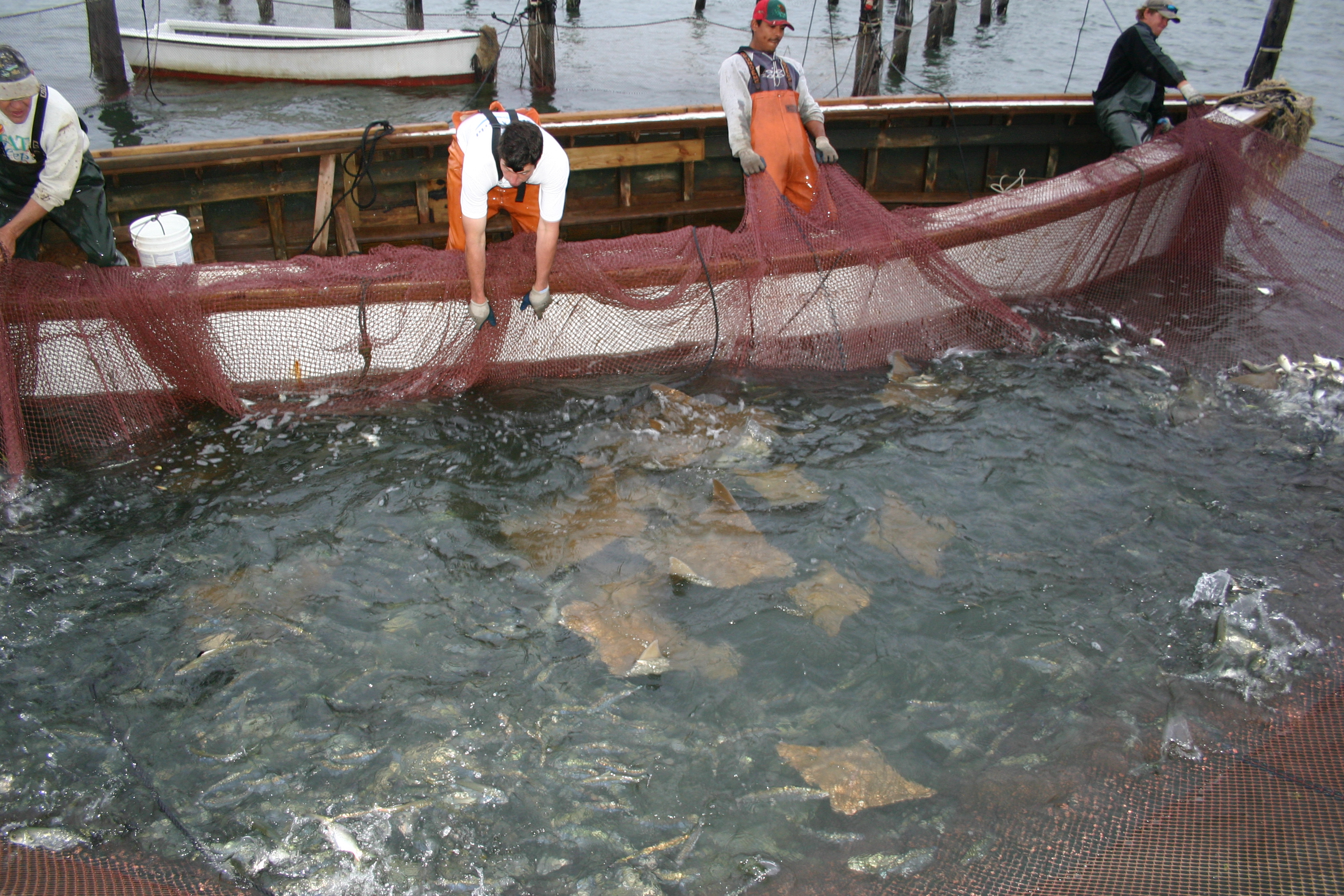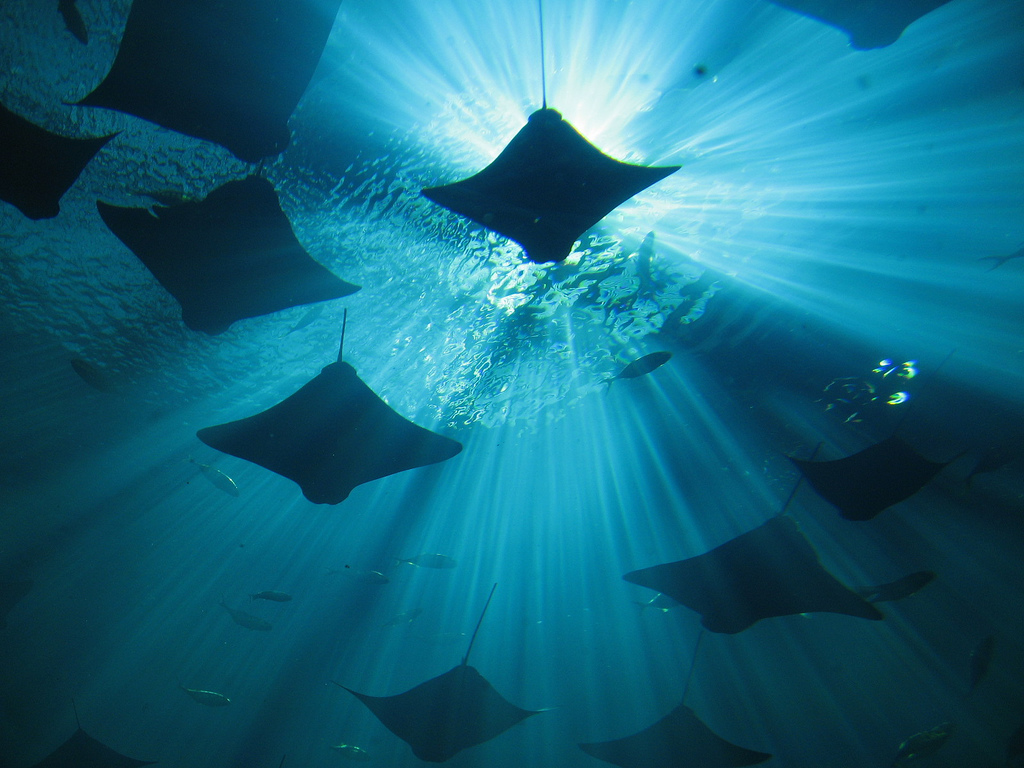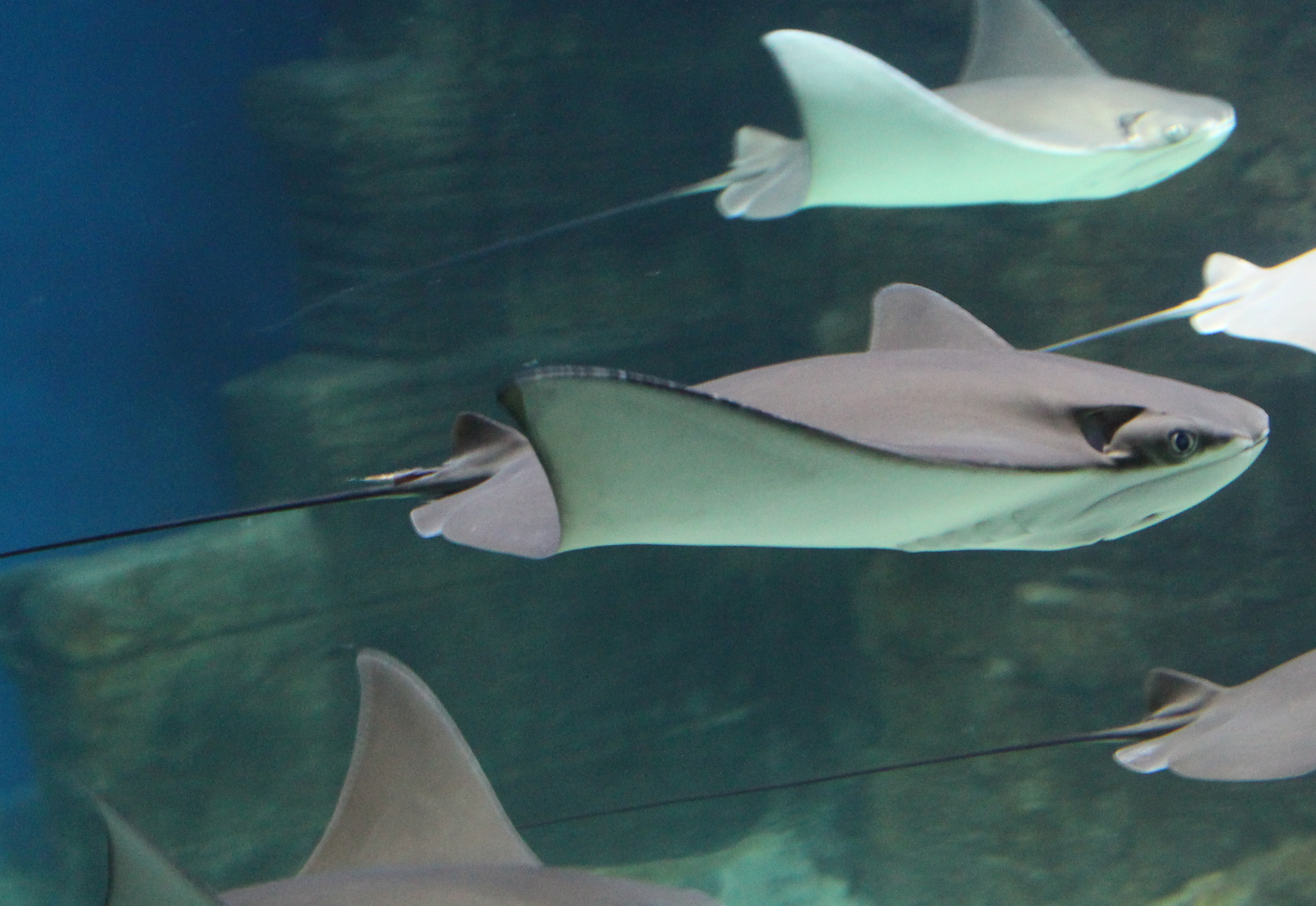When Bad Things Happen to Good Rays
Kate Petersen ·This blog post is the first of a two-post series examining cownose ray (Rhinoptera bonasus) history and ecology in the Chesapeake Bay.
In 2007, an article appeared in the reputable scientific journal Science asserting that declines in large shark populations along the eastern coast of the United States had led to an “explosion” of rays and skates due to lack of predation. This uncontrolled proliferation of oyster and scallop devouring rays and skates had then wiped out a scallop fishery and could inhibit the recovery of the oyster fishery. Cownose rays, native seasonal inhabitants of the Chesapeake Bay, were singled out as particularly problematic characters in this trophic cascade. This was not the first time cownose rays had been accused of disrupting fisheries. They had long been regarded as a nuisance in the fishing and aquaculture industries, because they get caught in fishing nets and were believed to decimate oyster beds.

The 2007 article received significant media attention and was widely embraced by fishing industry and conservation interests alike. There had already been long standing interest in developing a cownose ray fishery and now this idea seemed to have scientific backing and a conservationist upshot. Save the Bay, Eat a Ray became a popular refrain and the possibility of cultivating a sustainable local fishery to correct the alleged cownose ray problem was widely celebrated by the media and conservation organizations. Simultaneously, the rays were subject to gruesome and increasingly popular bow fishing tournaments in which the largest rays, pregnant females, were summarily terminated with compound bows and baseball bats for prizes. According to the Bay Journal, one such tournament grew from a handful of participants to 150 contestants over a 20-year period.

The tides began to turn in 2015 when harrowing footage taken at a ray fishing tournament received widespread media attention and prompted public calls for protective legislation. This wave of public support continued that fall when cownose rays were entered into Twitter’s #cuteoff contest and received 222 “likes.” This is probably related to their kind smile and pleasing head shape.

While the 2007 trophic cascade article had been cited hundreds of times, there were marine scientists familiar with cownose rays that had misgivings about the paper. In October, 2015, the Chesapeake Bay Program hosted a meeting of cownose ray researchers at the National Aquarium in Baltimore, MD. Meeting participants collaborated to inventory the current state of knowledge of cownose ray life history and population dynamics in the Chesapeake Bay. Their effort culminated in a final report published in January, 2016. With the publication of this report, the trophic cascade paper and the “Save the Bay, Eat a Ray” narrative began to take on water.
Based on stomach content analysis, the scientists agreed that, while rays were capable of eating small oysters, the vast majority of a ray's diet consists of non-commercial bivalves and crustaceans. The scientists also expressed concern about the bow fishing tournaments and other unregulated fishing because of the species’ low fecundity. Cownose rays mature after 6 to 8 years and then only birth one pup a year after an 11-month gestation. Even the authors of the tropic cascade paper identified that a population explosion in an animal with this low reproductive potential would be unusual. Furthermore, the rays give birth in the Chesapeake Bay in June and July and then mate again immediately. By August, all the males have left the Bay, so any ray killed in the Bay after that time is almost certainly a pregnant female. Dr. Matthew Ogburn, a Smithsonian Environmental Research Center (SERC) marine biologist and aquarium meeting participant, would later comment, “Because of the slow birth rate, we know that if we don’t manage them, and instead harvest them in a way that heavily impacts the population and causes a population decline, it’ll take a long time for them to recover. If we lose something important, we could lose it for decades.”
In February, 2016, an article published in Nature formally refuted the 2007 trophic cascade article. The authors of the Nature article examined shark and ray abundance datasets that the trophic cascade authors had ignored. They concluded that the cownose ray population increase did not actually coincide with a decrease in large shark populations. Rather, large shark and cownose ray populations increased simultaneously. The authors also found that commercial bivalve fishery declines began decades before this increase. These findings, coupled with cownose ray stomach content assessments, effectively sank the shark—cownose ray—commercial bivalve trophic cascade hypothesis.

Photo credit: Svlimkin CC-BY-4.0
In March, 2017, Maryland became the first of the United States to mandate protective fisheries regulations for the cownose ray. The legislation states that the Maryland Department of Natural Resources (DNR) must prepare a cownose ray fishery management plan by December 31st, 2018 and mandates a moratorium on bow fishing tournaments until July 1st, 2019. An email correspondence with Nancy Butowski of the Maryland DNR confirmed that the DNR management plan is running behind schedule, but a bill has been proposed this legislative session to extend the management plan deadline to Dec. 31st, 2020 and tournament prohibition to July 1, 2021.
Obviously, the story of the cownose ray should have bearing on how we conduct ourselves as scientists and science communicators. To quote the concluding paragraph of the 2016 Nature paper: “Our analysis underlines the potential consequences of misinterpreting results from a single survey index with limited scope …. Spurious conclusions from such studies may lead to counterproductive conservation and management policies. As such, close scrutiny … is required, particularly when alternative explanations … are not explored.”
To put this in lay-person’s terms: We have to do better.
Click here for another excellent article about the rise and fall of the "Save the Bay, Eat a Ray" narrative.
Tune in next week to learn about Dr. Matthew Ogburn’s investigation
of the mysterious cownose ray fall migration.